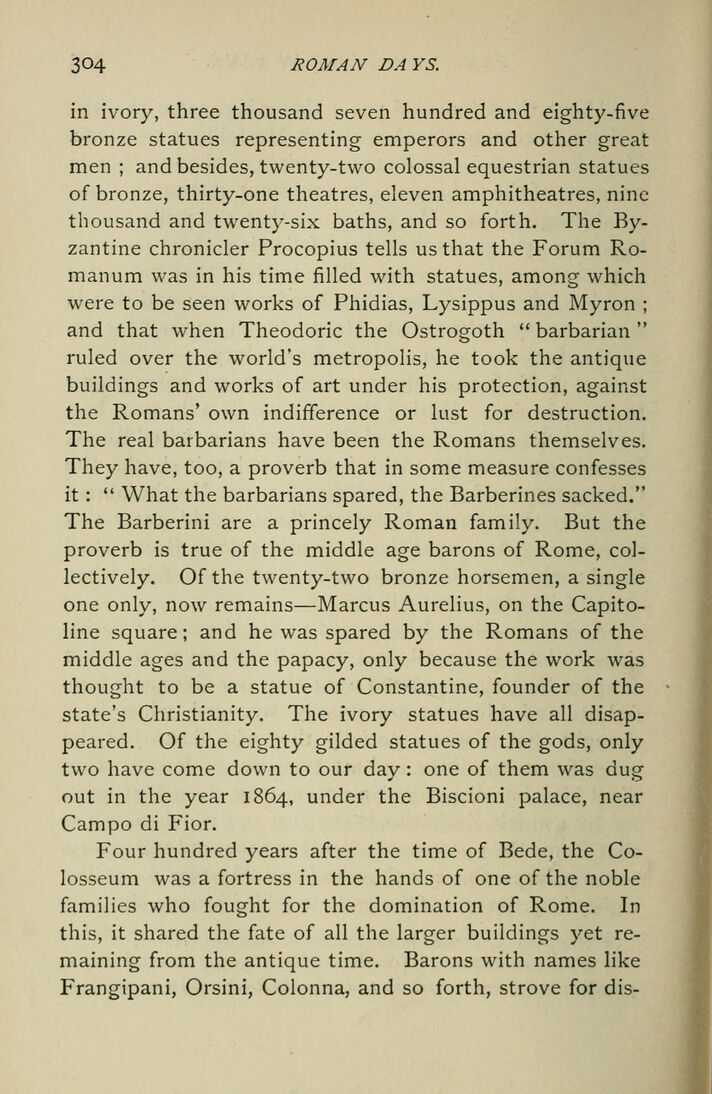
Full resolution (JPEG) - On this page / på denna sida - Pencil Sketches in Rome - 3. The Colosseum

<< prev. page << föreg. sida << >> nästa sida >> next page >>
Below is the raw OCR text
from the above scanned image.
Do you see an error? Proofread the page now!
Här nedan syns maskintolkade texten från faksimilbilden ovan.
Ser du något fel? Korrekturläs sidan nu!
This page has never been proofread. / Denna sida har aldrig korrekturlästs.
304 ROMAN DA YS.
in ivory, three thousand seven hundred and eighty-five
bronze statues representing emperors and other great
men ; and besides, twenty-two colossal equestrian statues
of bronze, thirty-one theatres, eleven amphitheatres, nine
thousand and twenty-six baths, and so forth. The By-
zantine chronicler Procopius tells us that the Forum Ro-
manum was in his time filled with statues, among which
were to be seen works of Phidias, Lysippus and Myron ;
and that when Theodoric the Ostrogoth " barbarian
"
ruled over the world’s metropolis, he took the antique
buildings and works of art under his protection, against
the Romans’ own indifiference or lust for destruction.
The real barbarians have been the Romans themselves.
They have, too, a proverb that in some measure confesses
it :
" What the barbarians spared, the Barberines sacked."
The Barberini are a princely Roman family. But the
proverb is true of the middle age barons of Rome, col-
lectively. Of the twenty-two bronze horsemen, a single
one only, now remains—Marcus Aurelius, on the Capito-
line square; and he was spared by the Romans of the
middle ages and the papacy, only because the work was
thought to be a statue of Constantine, founder of the
state’s Christianity. The ivory statues have all disap-
peared. Of the eighty gilded statues of the gods, only
two have come down to our day : one of them was dug
out in the year 1864, under the Biscioni palace, near
Campo di Fior.
Four hundred years after the time of Bede, the Co-
losseum was a fortress in the hands of one of the noble
families who fought for the domination of Rome. In
this, it shared the fate of all the larger buildings yet re-
maining from the antique time. Barons with names like
Frangipani, Orsini, Colonna, and so forth, strove for dis-
<< prev. page << föreg. sida << >> nästa sida >> next page >>